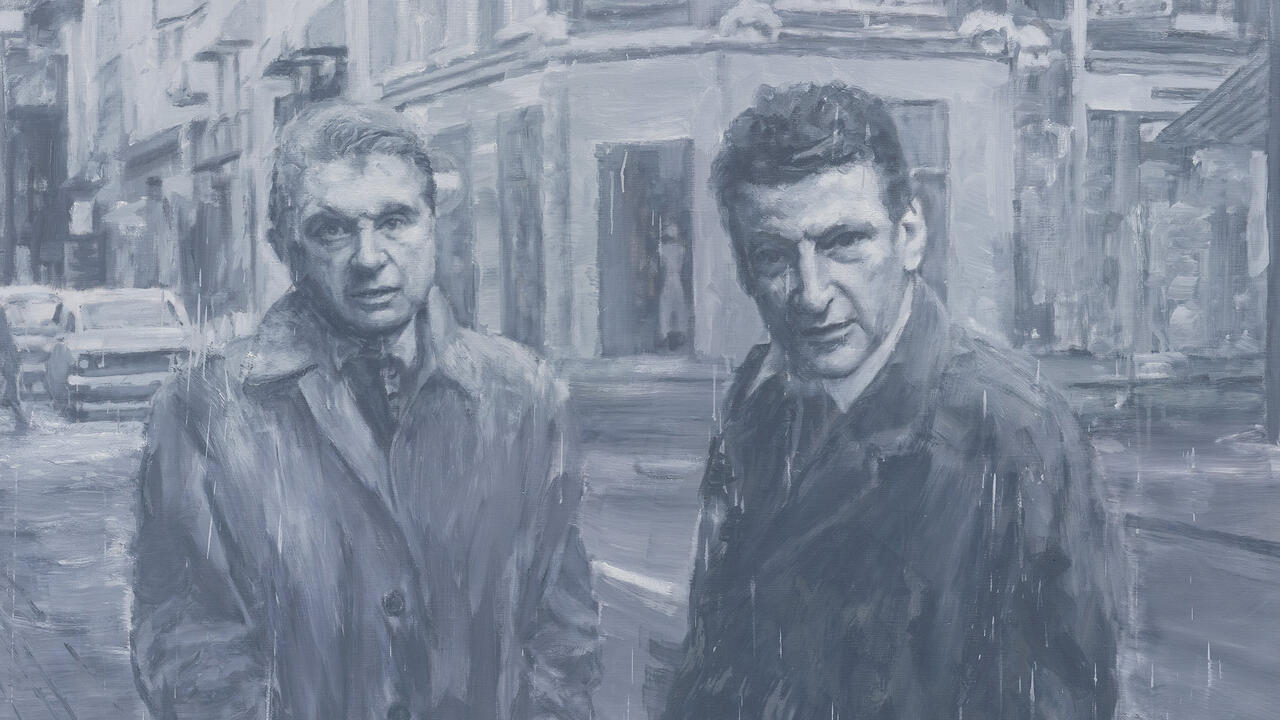Reto Pulfer
Exhaustion, Textiles, Ceramics and Mnemonics
Exhaustion, Textiles, Ceramics and Mnemonics

in the Blue Room), 2009–11 (Courtesy: the artist & Gallery Balice Hertling, Paris)
The first time I saw Reto Pulfer, he was standing in the middle of a jam-packed room at David Roberts Arts Foundation in London in 2009. He was clapping – alone – and kept clapping frantically until, finally, after ten painfully long minutes, some viewers started to join in, and the performance turned into a round of roaring applause and ‘Bravo!’ At that point he left. In Applause (2006–09), this open take on the social game of appreciation or rejection reminded me of a line from Lenny Bruce: ‘The reason I’m in this business, I assume all performers are – it’s “Look at me, Ma!” It’s acceptance, you know – […] And if your mother watches, you’ll show off till you’re exhausted.’
Pulfer – who was born in Bern and lives in Berlin – showed up again in September 2011 at the Swiss Institute in Milan. Invited by curator Salvatore Lacagnina, the artist was standing in a large room where he had hung textiles to create a 4×5 metre tent and a wrap-around installation; Die Vertretung des Erschöpften (The Substitution of the Exhausted, 2011) also included a crate, pastel and pencil drawings (on small pieces of paper or directly onto the tent and crate), glasses, light bulbs and a lemon and vanilla scent. He was exulting – yelling and jumping up and down, all alone outside his tent – and kept revelling, in a growing frenzy. But this time, no one joined him except his infant son with an amusing echo of ‘Yeah! Yeah! Yeah!’ After five minutes, Pulfer left, evidently tired. The Ausdrucksmoment (moment of expression, as he defines it) was over. Applause ensued, and the installation gradually regained its silence.
There is a captivating tension between Pulfer’s confrontational performances, which underscore his unabashed stage presence, and the quietness, even shyness, of his delicate art works. This tension – between shouts and murmurs – stems from a state of ‘fragility’, which he considers fertile and transmutative. Accordingly, Pulfer explains his works in terms of Zustände (states), moments of transition. Flexibility is inherent to his choice of materials – paper, fabrics, textiles equipped with zippers, among others – while fluidity is evoked by recurring aquatic colours like blue and turquoise. ‘Transformation is the key to all stories,’ he says.
Experiencing his works can often feel like reading a private diary. Indeed, he systematically writes ideas down before translating them into reality, either as actions or objects. Short notes, scores of letters and numbers or oneiric stories become the loose scripts for his performances and sculptures, which may include a number of variations. Aquariumspiel in 128 Zuständen (Aquarium Game in 128 States of Being, 2007) is a set of photos, fragments of raku ceramic, velvet fabrics and a bench which can be installed in 128 different ways; Ofaz 1442 (2007–08) is a sofa with six wooden boards on which people can sit and move in 1,442 ways. The artist defines the preliminary texts that generate these pieces as mnemonics – a nod to the ancient Greek technique for memorizing complex speeches or poems, which was passed on through the Middle Ages to the Renaissance. One method of the art of memory for archiving, combining and finding ideas was to imagine a house and each of its rooms filled with a striking set of objects and people.
For a recent exhibition curated by Vincenzo de Bellis at Rome’s Fondazione Pastificio Cerere, Pulfer created Die Kammern des Zustands (The Chambers of the Condition, 2011), an installation that turned the whole space into a sequence of rooms corresponding to different colours and mental states. Yet the artist leaves his work open to interpretation by publishing his mnemonics only after the exhibition, even years after: viewers are left to explore the sensorial links between Pulfer’s pieces and their own memories.
Pulfer’s approach to making art has a rhythmical side to it that is reminiscent of musical composition (he is an amateur guitar player). Yet the visual impact of his writing and the extreme, abrupt linguistic shifts he sometimes introduces also suggest poetry in the sense of the classic Greek poiesis (making). While his favourite poets include Ovid, Hölderlin, Paul Celan and Novalis, I am reminded of John Keats and a letter he wrote on 21 December 1817 to his brother: ‘I mean Negative Capability, that is when man is capable of being in uncertainties, mysteries, doubts […]’. Pulfer plays with similar states of suspense and hesitation. The rules of composition that he imposes on his production like a basic grammar – and all the preparation (memory routines, rehearsals, calculating all possible outcomes) – do not protect his work from mistakes, misreadings or indifference. Nonetheless, the artist incessantly brings ‘things of beauty’ to the brink of exhaustion in order to evoke an emotional, even sentimental, response on the part of the viewers – and perhaps to elicit some affection.

















